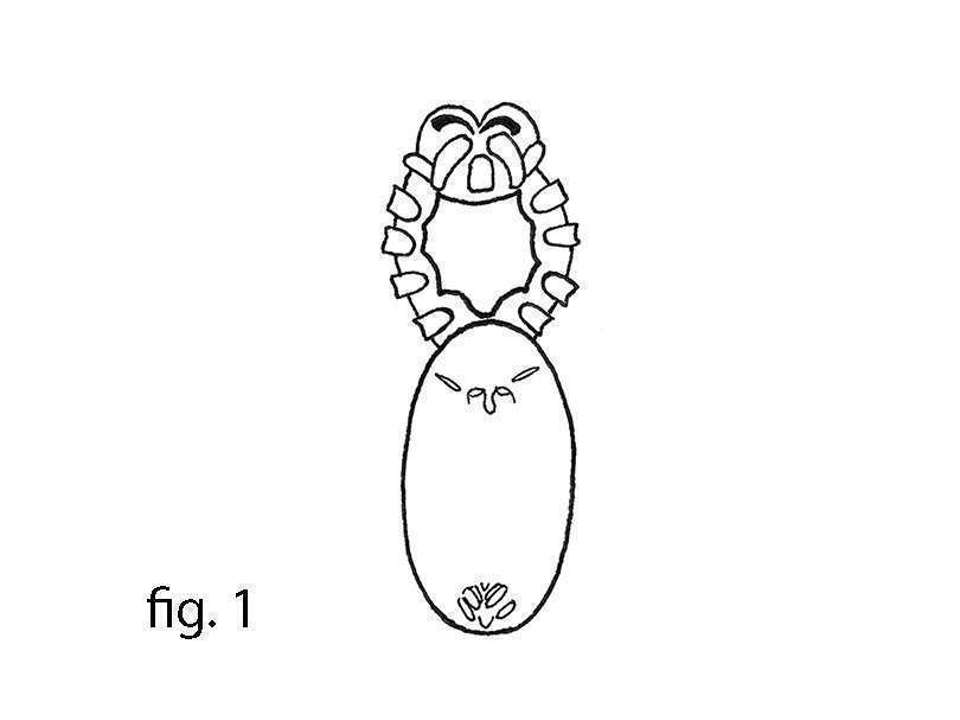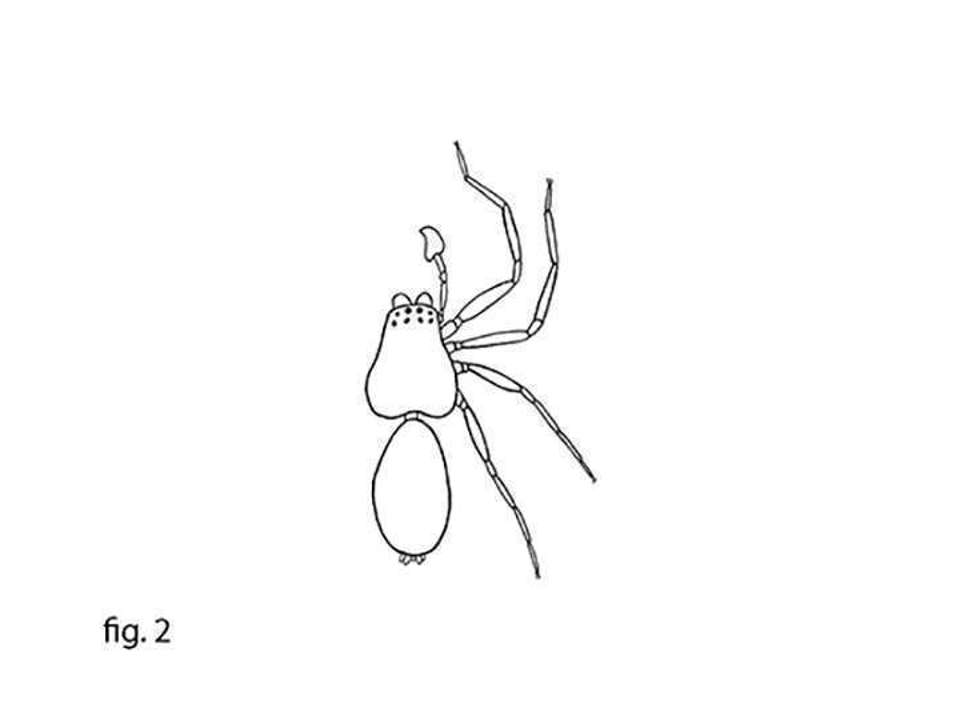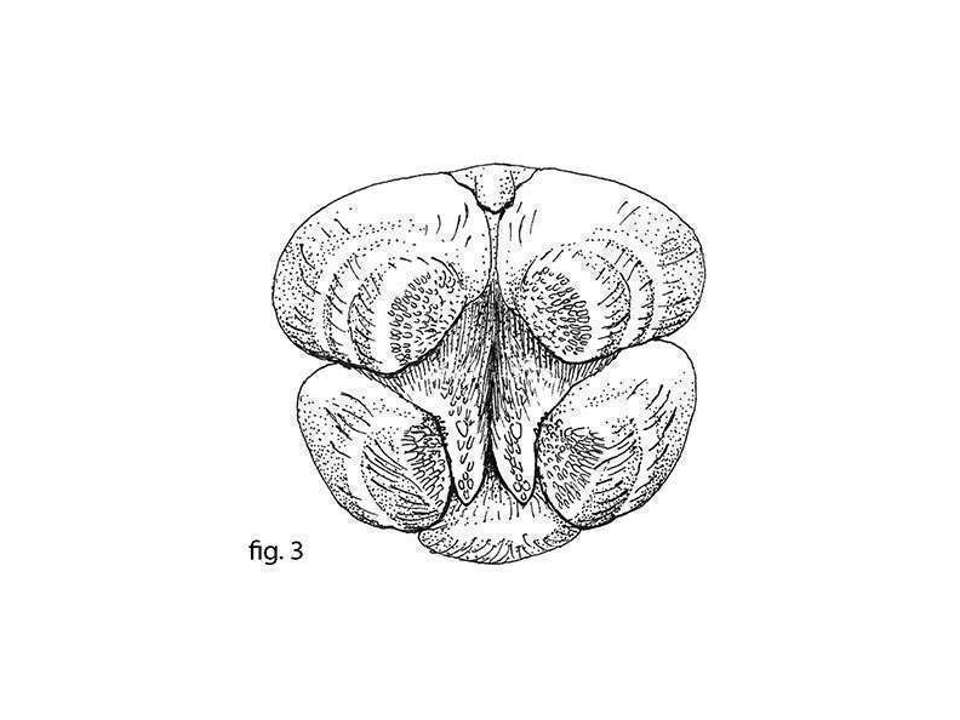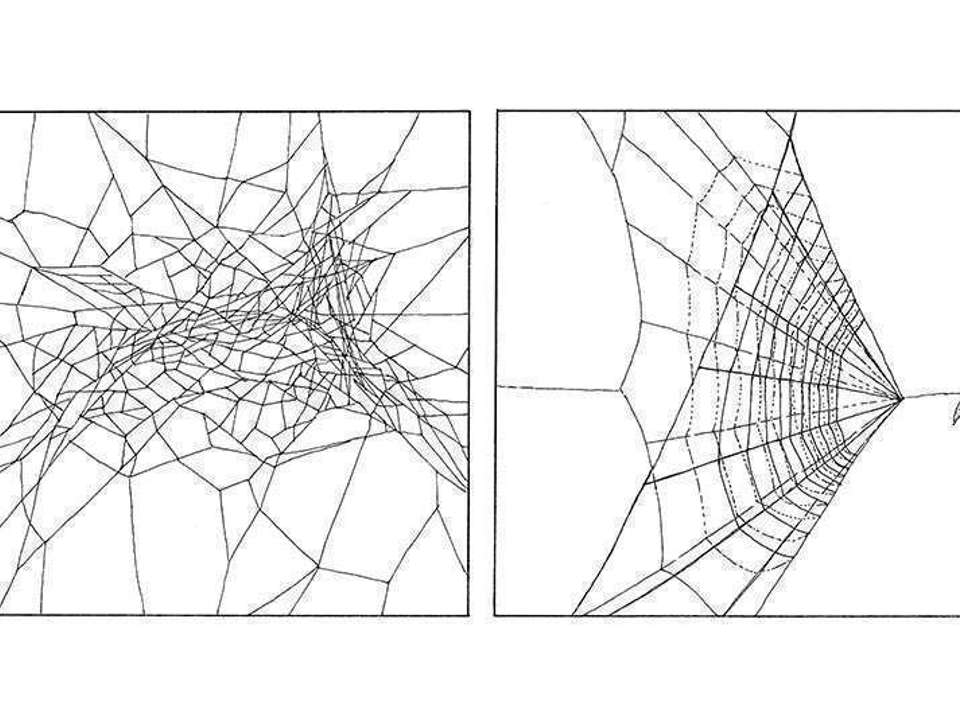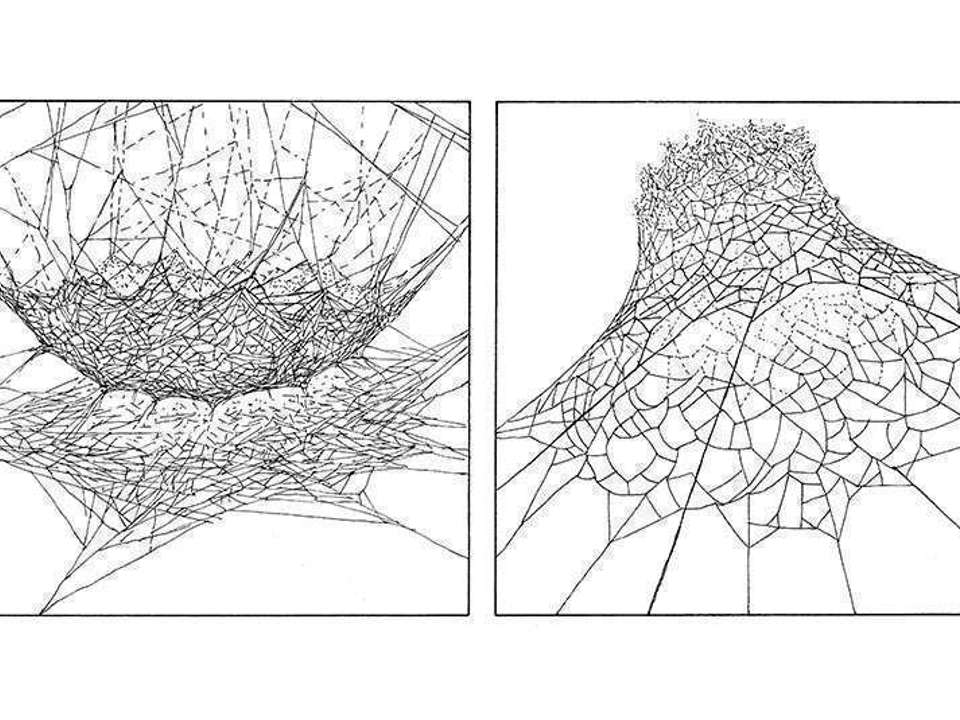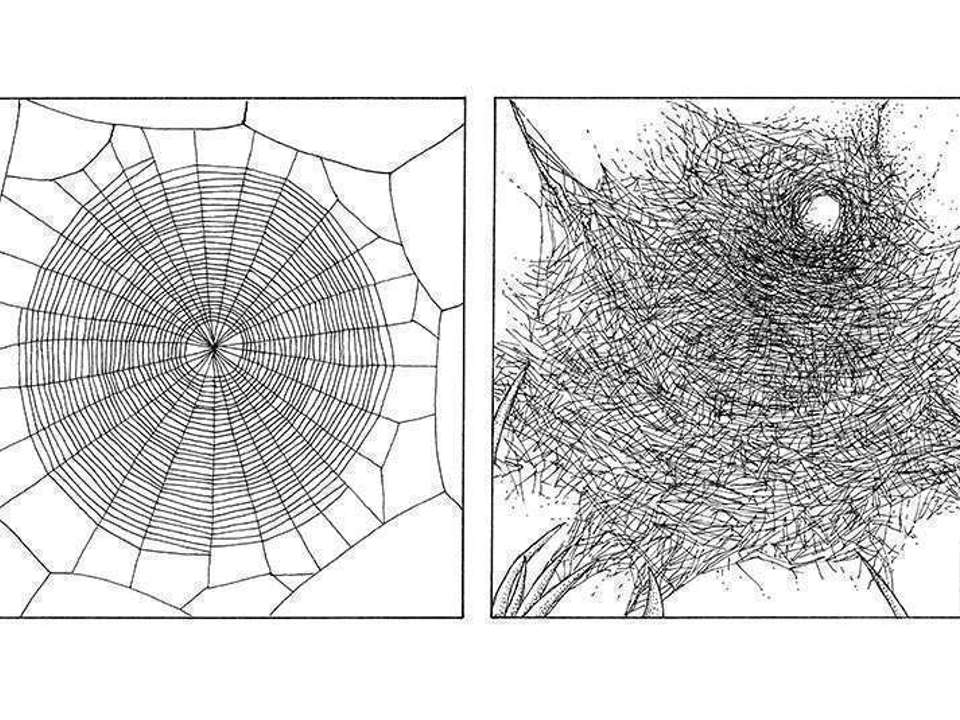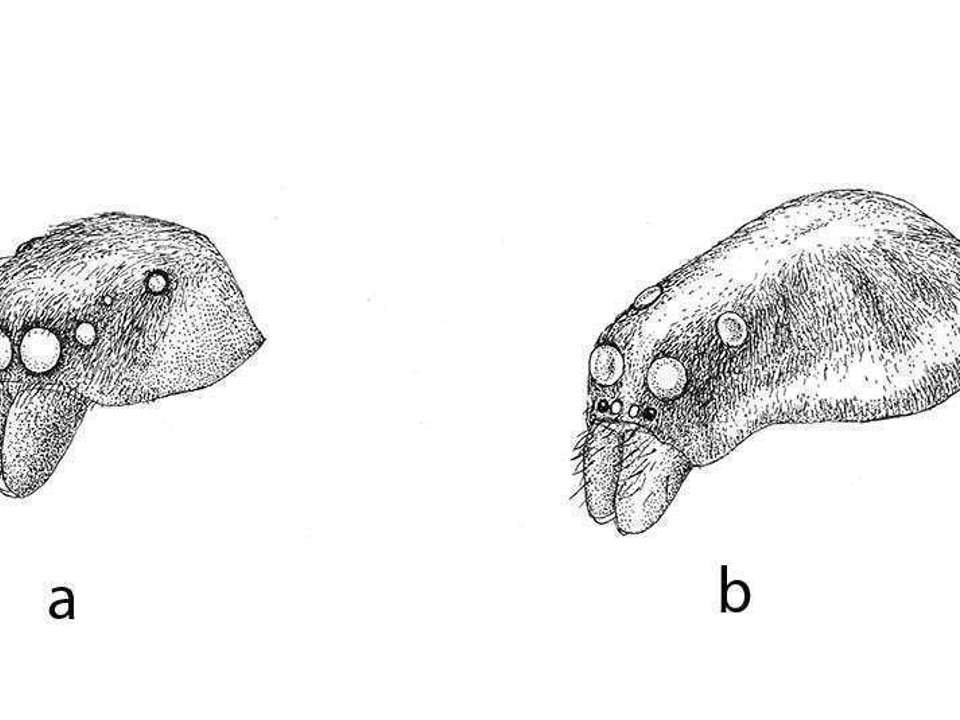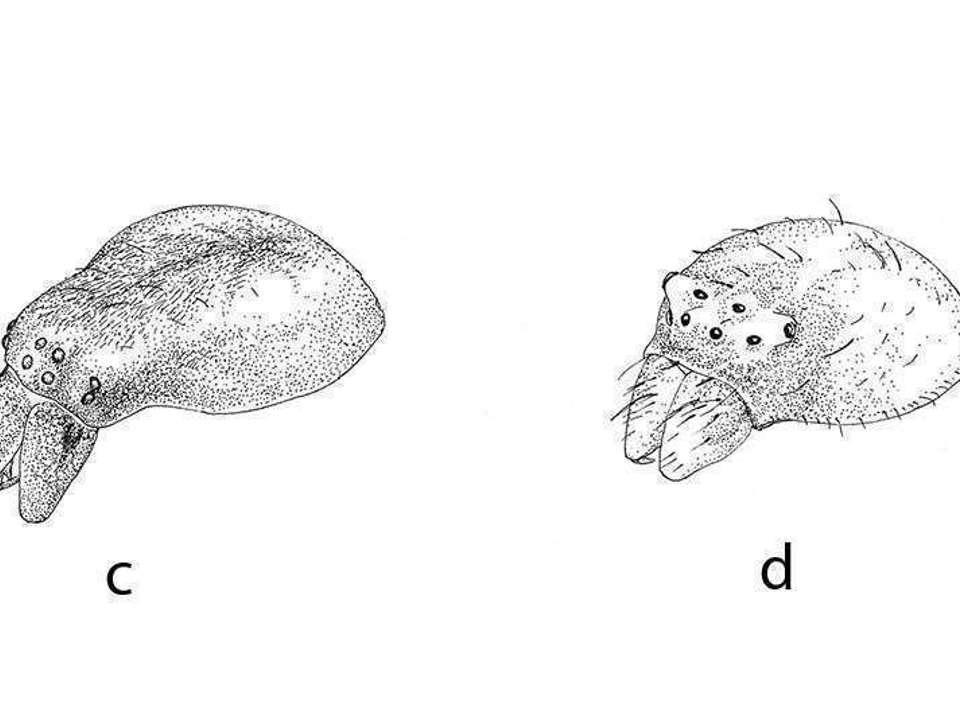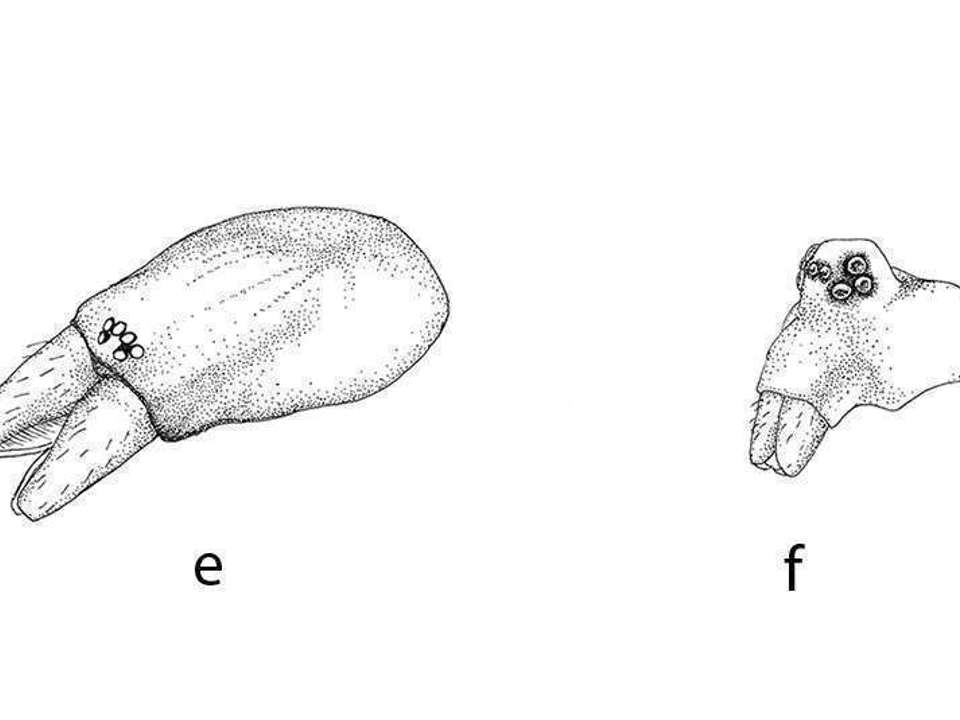The Denver Museum of Nature & Science needs your help!
The Colorado Spider Survey (CSS) will establish the Denver Museum of Nature & Science as a major regional repository for this taxonomic group. Scientists and teachers worldwide will be able to access the data via the World Wide Web and borrow specimens for research projects. Coloradoans interested in learning about and collecting spiders are invited to become a part of this research project.
The Earth is home to a remarkable diversity of life. One of the main responsibilities of natural history museums is to collect, preserve, and document the diversity of organisms that share this planet with us.
The Importance of a Spider Survey:
Every year, more and more of Colorado’s natural areas are affected by increasing population growth and development, especially along the Front Range from Fort Collins to Colorado Springs. Habitat degradation due to development may be driving wildlife out of once-pristine habitats.
Information about the distribution and diversity of many arthropod groups in this region of the country is lacking. One group that is particularly understudied is the order Araneae, or the spiders. Little is known about either the biodiversity of spiders in Colorado or the impact urbanization is having on species distributions in the state. No formal spider surveys have ever been conducted in Colorado. The Colorado Spider Survey is a means of gathering critical information about the ecology and distribution of this understudied group, and the research will result in a field guide to the spiders of Colorado.
The survey will be carried out through a series of Spider Identification and Collection Workshops that will be held throughout the state but particularly in cooperation with the state park system. These workshops, led by a team of professional and amateur arachnologists (or spider biologists), will train members of local communities in spider biology, morphology, taxonomy, and collection techniques. The specimens will be collected during the next several years by team leaders as well as workshop participants and will be sent to the Denver Museum of Nature & Science for identification and storage. Data from these specimens as well as Colorado specimens housed at other collections throughout the country will be compiled and published in an electronic database.
Spider Survey Update
CSS participants have sent in over 30,000 spiders! The Denver Museum of Nature & Science now has the largest collection of spiders in the state. During the first few years of the project, hundreds of people were trained through the CSS workshops and have sent specimens to the Museum. A team of on-site volunteers is busily identifying the CSS spiders down to genus and species. We have identified about 65% of the specimens sent in by participants.
Just the Facts
- There are approximately 40,000 known species of spiders worldwide out of nearly 1.7 million described species of plants, animals, fungi, bacteria, and protists.
- The order Araneae (the spiders) ranks seventh in total species diversity among all other groups of organisms, and undescribed species of spiders are being found every year.
- Spiders differ from insects in having eight legs instead of six, two body parts rather than three, no antennae, mouthparts called chelicerae rather than the mandibles of insects, usually eight eyes rather than the variable number found in insects, specialized leg-like appendages called pedipalps (or palps), and structures called spinnerets through which silk is produced (see figures below).
- Spiders are important predators of insects and other arthropods in every ecosystem in the world.
- An early arachnologist by the name of William S. Bristowe estimated that one acre of land could be home to 2.25 million spiders.
- The weight of insects eaten each year by spiders exceeds the total weight of the human population. Without spiders, humans would be overwhelmed by insects at every turn.
Capturing Prey
- Not all spiders use webs to capture prey.
- Some spiders, known as wandering spiders, use keen vision to hunt. These visually hunting spiders stalk their prey like wolves, jump on their prey like cats, or ambush their prey while sitting motionless and camouflaged against the background.
- The majority of web-building spiders have poor eyesight and rely on the vibrations of struggling insects transmitted through the silk of the web to locate their food.
- Spider webs come in a variety of shapes and sizes (see examples below). Each different web type is often so characteristic of a certain type of spider that an arachnologist can identify the family of spider to which a web builder belongs without even seeing the spider itself.
The Uses of Silk
- Spider silk emerges from the body of the spider in liquid form through tiny spigots on the spinnerets (Figs. 1 and 2). The liquid silk turns solid when it is pulled, either as the spider uses a back leg to pull the silk out of its body or when the spider attaches the droplet to an object and pulls its body away.
- Spider silk is used not only for web construction but also for wrapping active prey.
- All spiders, whether web builders or wandering spiders, produce a dragline of silk as they move around in the environment. This dragline is the spider’s insurance against injury. If the spider is crawling along a leaf and a sudden gust of wind knocks it off, the dragline will keep the spider from falling too far.
- Most female spiders also use silk to protect their eggs inside a soft silken egg sac. Burrowing spiders line their underground homes with silk, thus keeping them free of dirt and debris.
- When you see a spider web, it is an almost sure bet that the resident is either a juvenile spider or an adult female.
- Spiders, like all other arthropods, must molt their outer shell or skin several times in order to grow into an adult. As soon as male web-building spiders molt into adulthood, they lose the silk glands that allow them to produce the capture threads of a web although they retain the ability to produce non-sticky silk.
- Eating is not foremost in the minds of these males! Adult males can be found wandering around looking for a female with whom to mate. Often male spiders are found lurking at the edges of a female’s web.
How Spiders Mate
Male or Female?
You can tell adult male spiders from females by looking at their pedipalps, or the leg-like first appendages (see Fig. 1). Males use their pedipalps as intromittent organs, or structures used to inject sperm into the female. The testes of male spiders are located in the abdomen. A male spider constructs a tiny platform of silk, called a sperm web, on which he deposits a droplet of sperm. He then sucks this sperm into specialized ducts found in his boxing glove-shaped pedipalps. When it comes time to mate, the male inserts his pedipalps into the female’s genital opening (called her epigynum). Adult females have a dark, hardened (or scleritized) epigynal opening.
The Mating Ritual
Prior to mating, a male must communicate to a female that he is a mate and not a meal. It is a myth that female spiders eat the male after mating. Although this does sometimes occur, it is the exception, not the rule. A male web-building spider sings a silk song to the female of his dreams by plucking her web in a pattern typical of his species. These courtship vibrations are very different than the vibrations produced by an insect caught in the web. A wandering male spider literally dances for his lady love. These males wave their front legs and tap their pedipalps on the ground in a specific pattern. If the female is receptive, she will respond to the courting male and will allow him to approach and mate with her.
How to Help
We need people to collect spiders from throughout the state and help us determine what species of spiders are found in every ecosystem in Colorado. However, before collecting any spiders, please read "Before you begin."
Before You Begin
Permits
Although spider-collecting permits are not issued by state or federal agencies in Colorado, permission is required to collect in any state or federal land. Participants of the Spider Identification and Collection Workshops will be provided with a handbook that contains permits for various state and federal agencies. Anyone who wants to participate but cannot take one of these workshops can only collect spiders on their own land or on private land with the landowner's permission.
Rules to Abide By
As a participant of the Colorado Spider Survey, you must follow these rules:
- Be careful! Although you are participating in a project affiliated with the Denver Museum of Nature & Science, the Museum cannot be held liable for any injuries, accidents, or untoward events that occur while you are collecting spiders and participating in the Colorado Spider Survey.
- Do not collect in any area unless you have obtained permission from the landowner.
- Once you have labeled your specimens, please send them to the Denver Museum of Nature & Science (see “Shipping Your Spiders”).
- Have fun!! You will be stepping into (and we hope not onto!) a world of small, fascinating, secretive creatures.
Collecting Spiders
Collecting Materials
Vials
A semi-clear film canister is the best vial to use for collecting. These canisters have tight-fitting lids, so the canister also can be used for alcohol storage. It is best to carry three or four empty, dry vials for capturing the animals and one or two vials with alcohol for killing and preserving the specimens.
Preservatives
Unlike insects, spiders are not pinned; rather, they are preserved in 70% to 80% alcohol. The standard alcohol used is 70% ethanol, but it can be difficult to obtain. Do not use denatured alcohol because the denaturing agents can damage the specimens. The easiest alcohol to use for preservation of spiders is 70% propanol, which can be bought at any drug store as rubbing alcohol. Spiders placed in alcohol will drown fairly quickly. Spiders also can be killed by placing them in the freezer and transferring them into alcohol. However, leave them in the freezer only long enough to kill them and not long enough to freeze them—this can cause some tissue degradation. If you forget and leave the spiders in the freezer for a protracted period, immediately place them in 70% or 80% alcohol (propanol or good liquor, if you want to use your vodka for preserving spiders!).
Reporting Your Data
In order to better analyze the data, the surveys should be carried out for a fixed amount of time. The first three techniques listed should be one-hour timed methods although you do not have to collect for one solid hour. If you collect for less than or more than one hour for any of the first three methods, record the cumulative time spent collecting at a given locale on the data label. Approximately 22 beat-sheets can be sorted out in one hour.
You do not have to use all techniques while collecting spiders for the survey, but you should record on your data labels the technique you used. Use the following abbreviations for the techniques: (1) look-up, (2) look-down, (3) beat, (4) sort.
Casual Collecting
If you do not use one of the four techniques described above and decide instead to simply collect spiders when you come upon them, do not write "look-up," "look-down," "beat," or "sort" on your label.
Collecting Tips
When you collect, use one hand to lift up logs or look under bark and have your vial ready in the other hand. Spiders whose hiding places are suddenly disturbed do not tend to hang around long to see what will happen next, so you need to be prepared to grab them as soon as you see them. If you lift up logs or rocks, stand behind these objects and lift the top of them toward you so that if you expose something "potentially nasty" (e.g., rattlesnake, scorpion, centipede, etc.) the P.N. creature will move away rather than toward you. Remember to replace the logs or rocks in their original positions.
Additional Collecting Methods
For the more adventurous among you, night surveys also can be carried out. More spiders are active at night than during the day, so night surveys often yield more specimens. For night surveys, it is essential to have a strong headlamp for spotting the eyeshine of wandering spiders such as wolf spiders or fishing spiders or to spot the glint of light reflected off a spider's web. The same four methods should be used for night surveys. When using a headlamp, shine the light down about 15 feet ahead of you.
Reporting Your Data
Data Labels
Data labels are essential. Every specimen collected must have one or more collection labels placed in the vial or jar with the specimen. If all specimens were collected at the same locale on the same date at the same time using the same collecting technique, then one label can be placed in a vial containing all spiders from that sample. Otherwise, make separate labels for each specimen. If you sort the specimens from one sample into families, please place separate labels in each vial sent to the Denver Museum of Nature & Science. Specimens without data are worthless. It is essential that the locality and ecological data are included with the specimens.
- The best paper to use for labels placed in vials with alcohol is plain, unlined white paper.
- Write the information in pencil or in waterproof India ink. Do not use your computer printer to make alcohol labels—the letters from an inkjet or laser printer have an annoying tendency to fall off the paper when placed in alcohol.
- Ballpoint pens are also inadequate for alcohol labels because the ink rapidly fades away.
- It is standard practice to include three separate labels with each specimen: a locality label, an ecological data label, and an identification label.
- All of the labels must go inside the vial with the specimen. Labels attached to the outside of the vial can be lost or damaged too easily. Specimens should be sent to the Denver Museum of Nature & Science for further identification and storage.
1) Locality Label
This label provides information about the exact location where the specimen was collected. The essential information to include on this label is:
State (two-letter code): County
City (or distance and direction from nearest city or town)
Any other locale information that will help future collectors pinpoint the exact location. It would be helpful to include the actual address, including zip code, where specimens were collected. With this information, we can determine the longitude/latitude coordinates and the elevation.
If you know the coordinates and the elevation, include this information on the label as well.
An example of a locality label is:
CO: Jefferson Co.
North Table Mountain,
off Easley Rd.; 39°47'00" N;
105 °12'00"W; 6300ft
2) Ecological Data Label
This provides information about the ecology of the specimen. Include the date on which the specimen was collected, the name of the person who collected it, the method used to collect the specimen (and/or where in the habitat it was found), and the time of day the collection was conducted. When writing the date, use Arabic numerals to indicate the day and year, but use letters for the month—this prevents future researchers from confusing the month and day. Use all four digits for the year—please do not abbreviate! Below is an example of an ecological data label:
18-May-1998
coll. P.E. Cushing
look up; 12:00-13:00;
in Aspen grove
or
20-Aug-1999;
coll. F.X. Haas;
look down; 22:00-24:00
(one hr. cum); in open field
3) Identification Label
This label should have as much information about the taxonomy as you can provide. If you can identify the specimen down to genus or species, by all means do so! If you can only identify the specimen down to family, that will save the Museum staff and volunteers from having to sort the specimens to that level. Included on this website is a simplified key to spider families. Other, more detailed keys to spider genera are available elsewhere. If you have no clue what the spider is, you need not include this label in the vial. Technically, if you include the species name, you should also include the name of the person who originally described the species. You should also include the name of the person who determined to what species it belongs (this is abbreviated as "det." on the label) and include the year the determiner keyed out that specimen. For example:
Linyphiidae
Masoncus pogonophilus Cushing
det. R. Gleason 1998
Shipping Your Spiders
Packing Specimens
All specimens you collect as a participant in the Colorado Spider Survey should be sent to the Denver Museum of Nature & Science for final identification and storage. Just prior to shipping specimens, pour off the rubbing alcohol in which the specimens have been preserved. Saturate a piece of paper toweling or cotton (or other absorbent material) with alcohol and place it loosely inside each container with the specimens. Be sure that the saturated material is not resting directly on top of the specimens. Specimens should be shipped in leak-proof containers such as film canisters or canning jars. Each specimen or each batch of specimens must have its own collection labels included inside the jars or vials with the specimens. Pack the containers with the specimens in sturdy cardboard boxes with sufficient packing material (packing popcorn, Styrofoam, or newspaper) to prevent the containers from jostling against one another.
Mailing and Contact Information
Specimens should be mailed to the following address:
Dr. Paula Cushing
Curator of Insects and Spiders
Denver Museum of Nature & Science
2001 Colorado Blvd.
Denver, CO 80205-5798
Please write "Scientific Specimens" under the address.
Spider Identification
Eye patterns are distinctive for different spider families. Click on the figures below to see examples of the following families:
a) Salticidae, or the jumping spiders;
b) Lycosidae, or the wolf spiders;
c) Araneidae, or the orb-weaving spiders;
d) Thomisidae, or the crab spiders;
e) Dysderidae;
f) Pholcidae, or the daddy-long-legs spiders.
Events and Activities
The survey will be carried out through sponsored collecting field trips. Only those people who have already taken either a Colorado Spider Survey (CSS) training workshop or a spider biology class taught by Paula Cushing (or by an arachnologist in another state) can participate in these collecting field trips.
The specimens collected during these field trips as well as specimens that have been collected by CSS participants since the project’s inception are sent to the Denver Museum of Nature & Science for identification and storage. Data from these specimens as well as from Colorado specimens housed at other collections throughout the country will be compiled and published in the electronic database.
Only those who have already taken a CSS training workshop or spider biology class can participate in the collecting field trips or in the spider identification parties.
References
Website links
American Arachnological Society
This is the primary society in the United States for those interested in studying arachnids
American Tarantula Society
This is the place to go for information on the big hairy spiders
British Arachnological Society
The Insect and Spider Collections of the World
This is a listing of all the major collections at museums and with private collectors (with your help, the Denver Museum of Nature & Science will be listed within the next five years!)
International Society of Arachnology
This site contains useful links and information about a range of arachnology-related topics and websites.
Salticidae
This site contains more great salticid images!
Spider Myths
There are a lot of myths about spiders floating around. Find out the truth about spiders on this informative site.
The World Spider Catalog
This site contains a current listing of all species of spiders described in all families worldwide.
Identification Guides
Ubick, D., P. Paquin, P. E. Cushing, and V. Roth, eds. 2009. Spiders of North America: an identification manual. American Arachnological Society, Columbia, MO.
This beautifully illustrated guide to the spiders of North America, north of Mexico, provides over 1,400 illustrations and keys to the genera in 68 spider families. Over 550 genera are included. The manual contains 72 chapters and a wealth of information, including an introduction to spider morphology, natural history, collecting techniques, and preservation methods; an overview of the current status and most recent developments in spider evolutionary history; a key to the 68 families of spiders found in North America, north of Mexico; keys to the genera in each of these 68 families; an etymological dictionary explaining the derivation of the names of spider genera and families; and a well-illustrated glossary. It can be ordered from the American Arachnology Society, or Amazon.
Jackman, J. A. 1997. A field guide to spiders and scorpions of Texas. Gulf Publishing Co., Houston, TX.
This is a nicely illustrated guide to the spiders of Texas.
Kaston, B. J. 1978. How to know the spiders. 3rd ed. W. C. Brown Co., Dubuque, IA.
This is an excellent key to spider genera for the nonprofessional.
Levi, H. W., and L. R. Levi. 1990. Spiders and their kin. Golden Press, New York, NY.
This is one of the best and most reasonably priced field guides to spiders available.
Marshall, S. D. 1996. Tarantulas and other arachnids. Barron’s, Hauppauge, NY:
This is a wonderful instructional manual for tarantula owners and breeders.
Spider Story Books, Children’s Books, and Fun Picture Guides
Back, C., and B. Watts. 1984. Spider’s web. Silver Burdett Company, Morristown, NJ.
A nature book for youngsters about how an orb-weaving spider makes its web.
Climo, S. 1985. Someone saw a spider. Thomas Y. Crowell, New York, NY.
A wonderful book of spider facts and folktales!
Preston-Mafham, K. 1998. Identifying Spiders: the new compact study guide and identifier. Chartwell Books, Inc., Edison, NJ.
A lovely small photo atlas of spectacular spiders from around the world.
Organizations
American Arachnological Society (AAS) publishes the Journal of Arachnology. Contact the membership secretary, Brian Patrick, for more information.
British Arachnological Society (BAS) publishes Arachnology: The journal of the British Arachnological Society. Learn more at the BAS website.
International Society of Arachnology (ISA) produces an annual catalog listing new arachnological scientific publications and a yearly listing of arachnologists throughout the world. Dues for AAS, BAS, and ISA can be paid through AAS.
Glossary
abdomen
the second segment of a spider's body
anterior
closer to the front of the body or to the cephalothorax
anterior median eyes
middle pair of eyes in the front of the carapace
appendages
the legs and pedipalps of a spider
arachnologist
scientist who studies arachnids
Araneae
the Order to which spiders belong
arthropod
animals with external skeletons and jointed legs; includes insects, spiders, and crabs
biodiversity
number and kinds of living organisms
book lungs
one type of respiratory organ found in spiders
boss
a bump found at the base of the chelicerae of some spiders
calamistrum
bristles on metatarsus IV of some spiders used to comb silk from the cribellum
carapace
first segment of spider's body
cephalothorax
first segment of spider's body
chelicerae
jaws of a spider
cobweb spider
spider in the family Theridiidae
combfooted spider
spider in the family Theridiidae
coxa
leg segment closest to the body
crab spider
spider in the family Thomisidae
cribellum
a flat spinning plate covered with thousands of silk spigots anterior to the spinnerets in cribellate spiders
cribellate
a group of spiders possessing a cribellum and calamistrum
daddy-long-legs spiders
spiders in the family Pholcidae
dorsal
on top
dragline
a safety line of silk
ecosystem
a community of species that lives in a particular habitat
Ecribellate
group of spiders lacking a cribellum and calamistrum
endites
platelike structures on either side of the opening to the mouth used to macerate prey and filter out large particles from the mouth
epigynum
scleritized plates surrounding the genital opening on the ventral surface of the female's abdomen
fang
claw-like structures at the ends of the chelicerae with openings leading to poison glands
femur
the third segment of the leg or pedipalp
fishing spider
spider in the family Pisauridae
funnel weavers
spiders in the family Agelenidae
genitalia
pedipalps and epigyna, or external sexual organs in spiders
hairy mygalomorph
spider in the family Theraphosidae
intromittent organs
male organs used to inject sperm into females; pedipalps are intromittent organs
jumping spider
spider in the family Salticidae
labium
a platelike structure located between the two endites
lampshade spider
spider in the family Hypochilidae
lateral
side
long jawed spider
spider in the family Tetragnathidae
lynx spider
spider in the family Oxyopidae
median
middle
metatarsus
sixth leg segment away from the body
morphology
the study of body form and structure
nursery web spider
spider in the family Pisauridae
orb-weaving spider
spider in the family Araneidae
patella
the fourth segment of the leg or pedipalp counting from the tip of the appendage
pedicel
the stalk linking the cephalothorax to the abdomen
pedipalps
the leg-like first pair of appendages on a spider
pirate spider
spider in the family Mimetidae
posterior
closer to the spinnerets
posterior median eyes
middle pair of eyes closer to the back of the carapace
sac spiders
spiders in the family Clubionidae
scleritized
hardened and thickened
scopula
a fringe of fine hairs on the ventral surface of the tarsus and metatarsus
sheet-web weaver
spider in the family Linyphiidae
sperm web
a platform of silk upon which the male deposits a droplet of sperm
spiderlings
baby spiders
spinnerets
organs through which silk emerges from a spider's body
spiracle
opening to the respiratory organs (the book lungs or the tracheae)
sternum
hardened plate forming the ventral surface of the cephalothorax
stridulating area
area with parallel chitinous ridges that are rubbed by another structure to produce sounds
tarantula
mygalomorph spider
tarsus
last segment of the leg or pedipalp
taxonomy
the science of classification; in biology the taxonomic categories from greatest to smallest are Kingdom, Phylum, Class, Order, Family, Genus, Species
tibia
the third segment of the leg counting from the end
tracheal spiracle
opening to the tube-like respiratory organs called tracheae that extend inside the spider's body
trapdoor spider
spider in the family Ctenizidae
trochanter
the second segment of the leg or pedipalp counting from the body
truncate
squared off
ventral
''belly'' side wolf spider in the family Lycosidae

